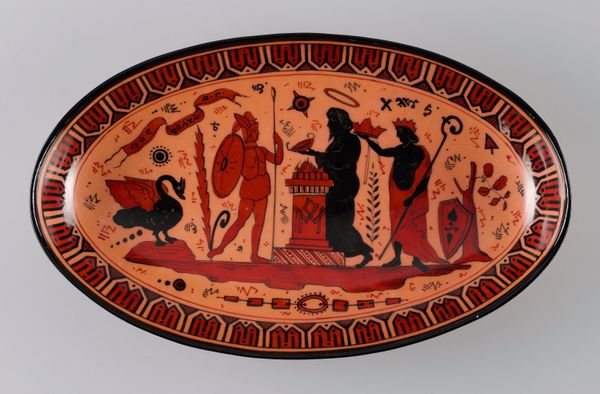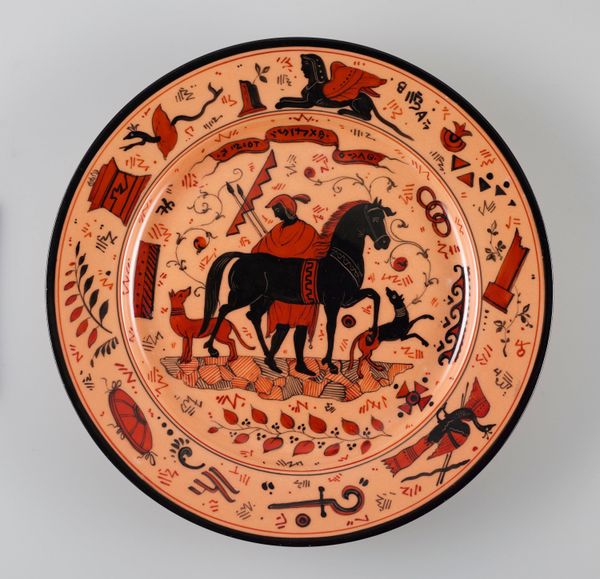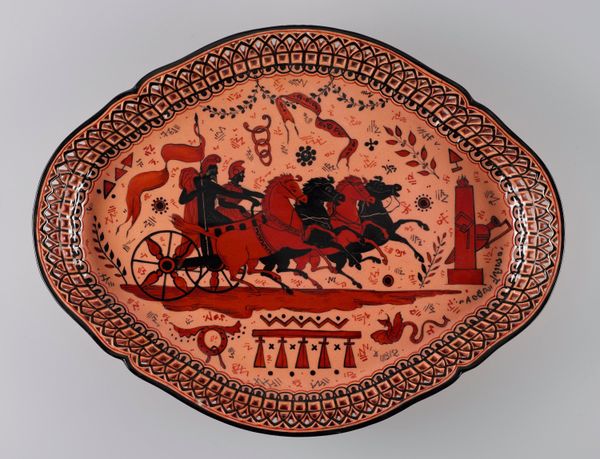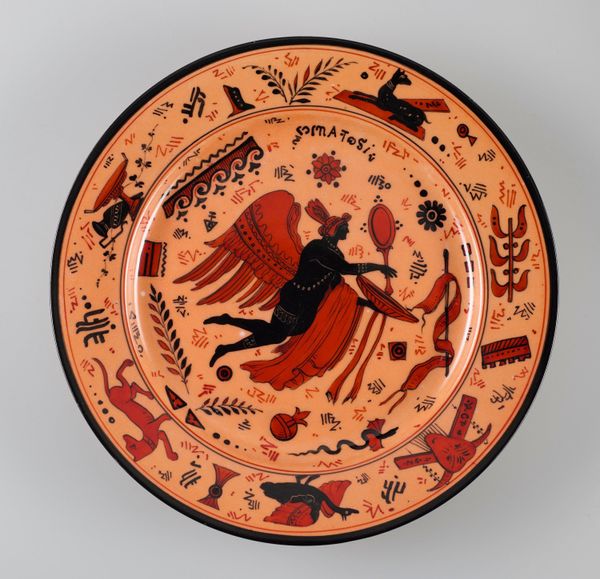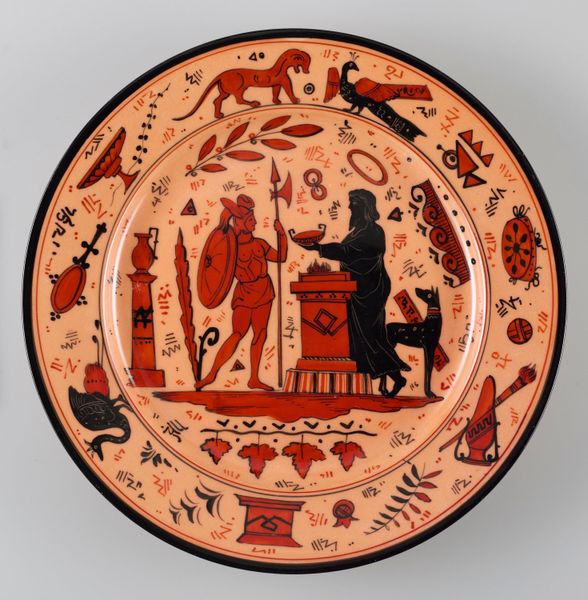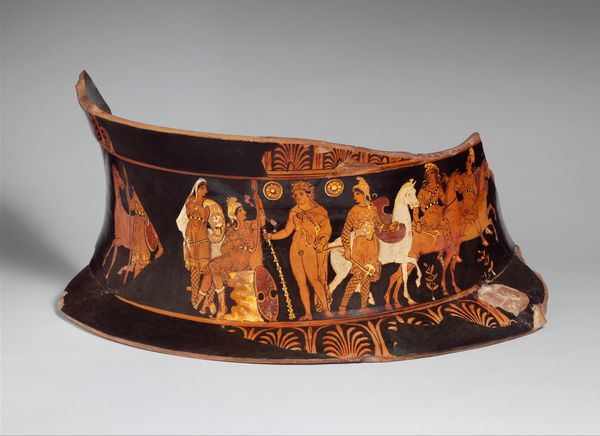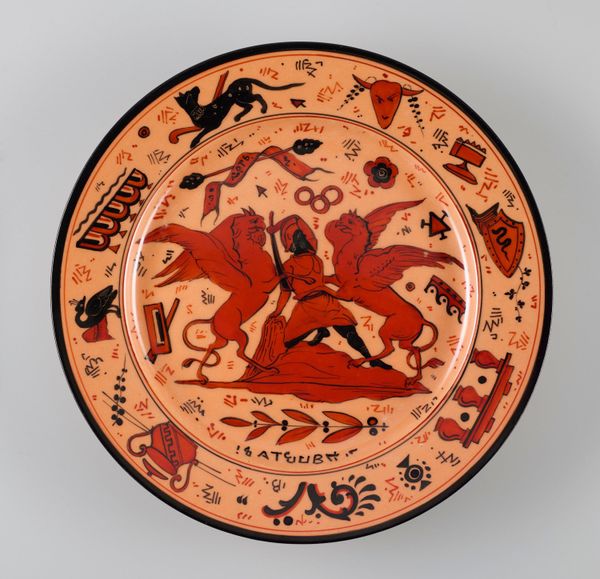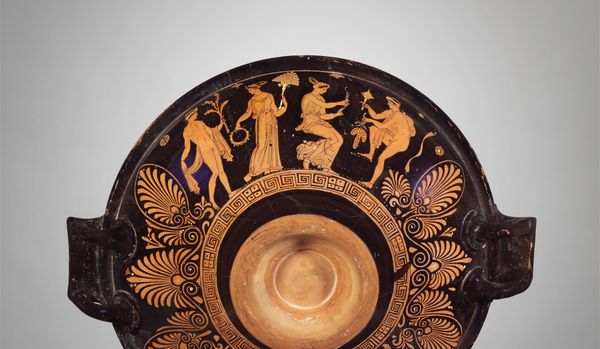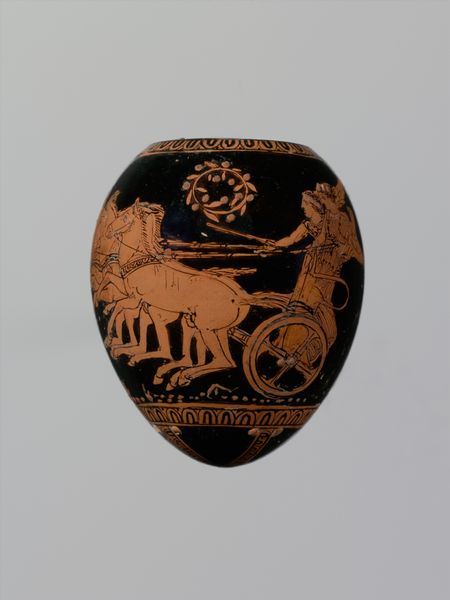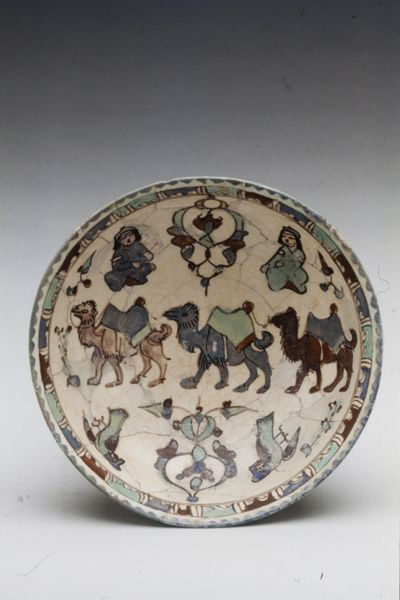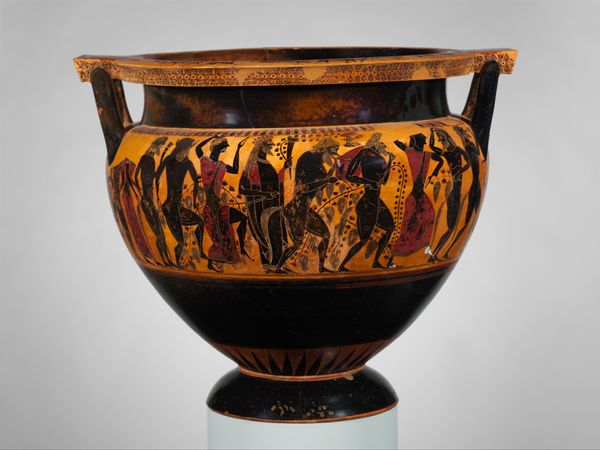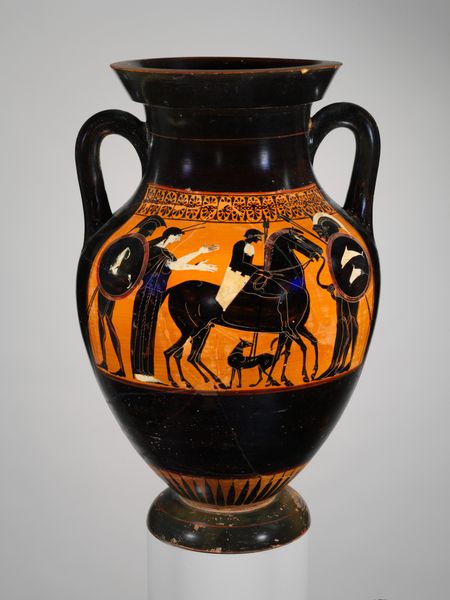
Serving Dish from a Royal Berlin China Service c. 20th century
0:00
0:00
ceramic, porcelain, earthenware
#
pottery
#
greek-and-roman-art
#
landscape
#
ceramic
#
porcelain
#
figuration
#
earthenware
#
ancient-mediterranean
#
ceramic
#
earthenware
Dimensions: 1 9/16 x 10 1/4 x 6 5/16in. (4 x 26 x 16cm)
Copyright: Public Domain
Curator: Here we have a "Serving Dish from a Royal Berlin China Service," likely dating from around the turn of the 20th century, housed right here at the Minneapolis Institute of Art. The medium is porcelain, which is a fine type of ceramic, so very delicate and often considered quite precious. Editor: The scene illustrated on the dish has an immediately striking, vibrant quality. The red and black figures against that lighter ground create a strong, eye-catching image; it's incredibly graphic. The shape, a wide oval, invites closer inspection too. Curator: Precisely. Its aesthetic is indebted to classical antiquity, particularly the ancient Greek pottery tradition. There are figures evocative of the Trojan War or perhaps a triumphant Roman general, although that’s not exactly known.. We might interpret the narrative it tells as symbolic of power dynamics. Note the hieroglyphic-looking images to the left; they represent a dog, and there are floral shapes throughout the outer space between figures. Editor: And look at the production. This isn't your everyday dish; the meticulous detailing and precise lines speak to the high level of skill that would’ve been involved in its creation. Think about the various firings, the mixing of the pigments, the labor involved. This dish wasn't made to just hold food; it's communicating status. Curator: I would certainly say so! We need to remember, this object emerged during a period of intense nationalism. These dishes were tools in maintaining and performing particular identities of cultural authority and, as such, can be read in dialogue with period texts concerning empire. Editor: You're right to call it a tool, though I want to reframe the material processes it underwent in its production. The serving dish also underscores global material flows that fed Europe’s craze for exotic aesthetics and styles from a broad historical lens. The act of service and dining, enabled by this object, would reinforce existing hierarchies and class structures. Curator: Thinking about material culture allows us to unpick and better grasp the many levels upon which gender, empire and the exotic operated within turn of the century German society. This one, somewhat fragile, serving dish helps us understand the larger context. Editor: Exactly. Appreciating the labor involved, the processes of creating and consumption... it brings new meanings to what at first may simply seem like a decorative object. We learn more about ourselves through its history.
Comments
No comments
Be the first to comment and join the conversation on the ultimate creative platform.
